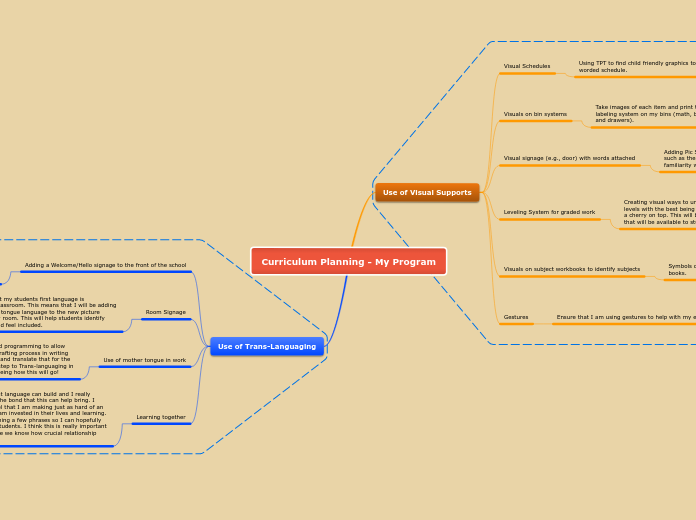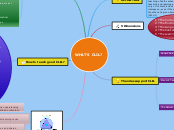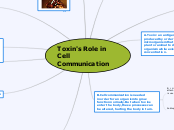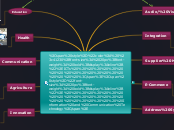Curriculum Planning - My Program
Use of Trans-Languaging
Learning together
I like the connection that language can build and I really enjoyed reading about the bond that this can help bring. I want my students to feel that I am making just as hard of an effort in their lives and am invested in their lives and learning. I am going to start learning a few phrases so I can hopefully communicate with my students. I think this is really important for SLL students because we know how crucial relationship building.
Use of mother tongue in work
I am going to adapt my thinking and programming to allow my students to be able to use the drafting process in writing to use their mother tongue to write and translate that for the final draft. This is an important for step to Trans-languaging in my classroom. I am interested in seeing how this will go!
Room Signage
I want to ensure that my students first language is represented in the classroom. This means that I will be adding my students mother tongue language to the new picture symbols found in my room. This will help students identify items in my room and feel included.
Adding a Welcome/Hello signage to the front of the school
Using my Cricut, I want to add a "Hello" and "Welcome" infographic to the front windows at the entrance of our school. We are very multicultural and I feel that this will be a welcoming way for students to feel their culture is represented.
Use of Visual Supports
Gestures
Ensure that I am using gestures to help with my explaining.
This strategy is something that I think benefits all learners. When we use some gestures (limited) we offer a visual way for students to enter into the learning environment. This is important for SLL learners to start to identify language with actions to help.
Visuals on subject workbooks to identify subjects
Symbols on books to help students identify their subject books.
When we think about how students will access items in the class, I think we often forget about items in the students desk. I want to change the labels on my books to include visuals to help students identify where work should be placed to help with organization.
Leveling System for graded work
Creating visual ways to understand grading - i.e. ice cream levels with the best being with chocolate sauce, sprinkles, and a cherry on top. This will be replicated on all visual checklists that will be available to students to keep consistent.
This strategy is really important for me to work on this weekend! I am really excited to begin this with all of my students to put a visual with my work expectations. All students love ice cream, so this visual will really help to affirm this. This is also important for SLL students so they can identify leveled expectations as they work. This could also include an exemplar of that expectation on their visual checklist.
Visual signage (e.g., door) with words attached
Adding Pic Symbols and words to various parts of the room, such as the doors, windows, boards, etc. to increase familiarity with word association.
This will help my students to begin to get acquainted with recognizing English words - matching pictures to words to get better language acquisition. This is really important for SLL students to begin to be comfortable with learning languages.
Visuals on bin systems
Take images of each item and print them out to put beside the labeling system on my bins (math, books, and centers bins and drawers).
This strategy will help students to identify the materials in our room without having to read or open all bins to find what they are looking for. This is really important to SLL learners because they will really need to access these resources to help their learning.
Visual Schedules
Using TPT to find child friendly graphics to place with my worded schedule.
This will help students to identify what is coming next with ease. This will in turn, help students to determine when transitions will occur and how they can prepare for the day. This will benefit my SLL students but also all students in my room.









